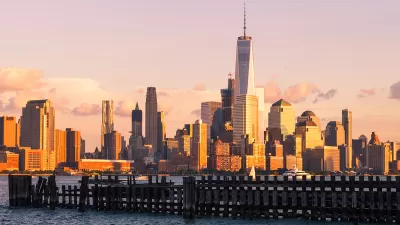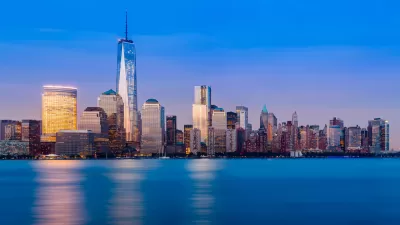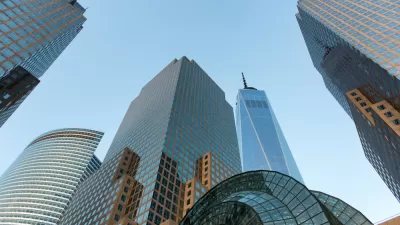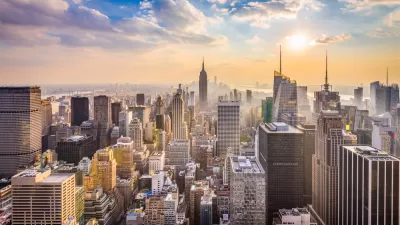Fear that skyscrapers might be a persistent target of terrorist attacks did not last long beyond the days and months following 9/11. Neither terrorists nor the Great Recession have stopped the city's skyline from continuing to reaching skyward.

"Shortly after the Twin Towers fell, there were predictions of the end of skyscrapers as a practical form of architecture. Others thought Ground Zero — hallowed ground — should not be rebuilt to such heights," according to an article by James M. O'Neill. "Yet, despite the searing emotional impact of the Sept. 11 attacks — and the economically stifling Great Recession of 2008 — the Manhattan skyline that Berman and other North Jersey residents know so well has been strikingly transformed."
"In the decade and a half since the Twin Towers fell, 15 of Manhattan’s 35 tallest skyscrapers have been built. And others will soon join them," adds O'Neill. To illustrate that point, and the scale of change that has come to the Manhattan skyline since 9/11, the article includes an interactive graphic.
For more reading on the growing heights of the New York skyline, but without the context provided by 9/11, the New York Times Magazine released a big, interactive issue documenting and illustrating the 21 buildings currently reaching above 800 feet in the city of New York.
FULL STORY: Since 9/11, New York City's skyline has only grown taller [interactive]

Alabama: Trump Terminates Settlements for Black Communities Harmed By Raw Sewage
Trump deemed the landmark civil rights agreement “illegal DEI and environmental justice policy.”

Planetizen Federal Action Tracker
A weekly monitor of how Trump’s orders and actions are impacting planners and planning in America.

Why Should We Subsidize Public Transportation?
Many public transit agencies face financial stress due to rising costs, declining fare revenue, and declining subsidies. Transit advocates must provide a strong business case for increasing public transit funding.

New California Law Regulates Warehouse Pollution
A new law tightens building and emissions regulations for large distribution warehouses to mitigate air pollution and traffic in surrounding communities.

Phoenix Announces Opening Date for Light Rail Extension
The South Central extension will connect South Phoenix to downtown and other major hubs starting on June 7.

How Housing as a Financial Product Harms Communities
Institutional buyers who treat housing as an investment product become disconnected from the impacts of higher rents, displacement, and housing instability.
Urban Design for Planners 1: Software Tools
This six-course series explores essential urban design concepts using open source software and equips planners with the tools they need to participate fully in the urban design process.
Planning for Universal Design
Learn the tools for implementing Universal Design in planning regulations.
Caltrans
Smith Gee Studio
Institute for Housing and Urban Development Studies (IHS)
City of Grandview
Harvard GSD Executive Education
Toledo-Lucas County Plan Commissions
Salt Lake City
NYU Wagner Graduate School of Public Service





























